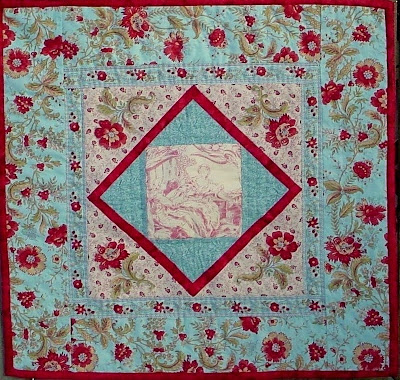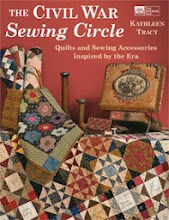Most of you who are quilters know that quilting takes you on a journey, sometimes with unexpected twists and turns. A project that was planned one way may very well end up differently than you thought it would. Quilts have a life of their own or so it sometimes seems.
Over 10 months ago I had some great ideas for the projects I wanted to include in the new book and I created designs based on those ideas and then played around with blocks and color schemes. I just completed all of the quilts (can't show them yet) and I have to tell you--once I began working on them, something happened. Quite a few didn't turn out anything like the way they were planned. This has happened with every set of quilts I make for a book.
Does this happen to you too? It truly does seem like they turn out the way they want to, not always the way I plan them. What looks good on paper doesn't always work when I begin to sew the pieces together. This is the part I really love about quilting: if you trust your instincts and let your creativity speak, it will turn into a pleasant surprise.
I never know how it will turn out when I begin and I've been known to start over from scratch if I take the wrong road and ignore my instincts (much easier to do if you're making small quilts!)
Writing
Remembering Adelia was definitely another journey for me.
Researching her family history for the book and delving into life in small town Illinois in the 1800s reminded me that I knew little about my own family's history and led me to want to explore it a bit more--another journey that will be worth taking someday and one that will continue for awhile I'm guessing.
I need to find out who this couple is and how they figure into MY family photos--
Right now I am on another journey of my own--making a Dear Jane quilt. Unless you've been living under a rock you probably already know about the Jane Stickle quilt from 1863 and the frenzy it has created for the past 14 or so years.
Read about Dear JaneI decided to make the leap and begin this challenging quilt. Not sure exactly when I'll finish or even IF I will but I'm giving it a shot so wish me luck. Now that I've finished the quilts for the next book, I have a little more time to make projects for myself. So far, I've made 15 Dear Jane blocks.
Many of them are easy ones, true, but a couple were hand pieced, one with curved seams, which I've never done before. I'm keeping a notebook with notes and tips on how to make the blocks using some different techniques and think that by the time I finish more blocks I'll have learned some decent skills.
I'm working on this quilt for myself, no pressure. What, a Dear Jane quilt, no pressure?? All those tiny, quirky pieces?? I have to admit, it took me awhile to jump in but I'm really having fun now that I did and making something slowly, without having to make it for a book or worry about deadlines, is very relaxing, to say the least. True, I just started, but I've got 15 blocks done so far and Oh! what I've learned already. Didn't know I could do reverse applique did you? Neither did I. It's not perfect, but it was also my first try, and applique isn't really my thing anyway.
For me, it's all about the journey and the learning. Don't look too closely at the blocks--none of them is perfect, but then neither were Jane's blocks and that's what I love--that a quilt like that can be so loved and admired, even though it's not perfect.
I have a basket filled with scraps left over from the book projects that I haven't sorted through yet and plan on using some of those for the DJ blocks. Oh, this is so much fun--to finally use some of the scraps I've been saving for just such a special quilt. Didn't know what I was saving them for, until now.
This will be for ME and it will be different from Jane's original quilt but still sort of the same, which is weird. Each quilter makes hers differently, but using the same patterns so you can tell that it's a Dear Jane but you can also tell that each one is a journey by itself, belonging to the individual and that's what I love. Some struggle with some of the pieces and techniques and difficult blocks (that's ME) and some find it easier. So we'll see. I can see my husband's and daughter's eyes glaze over--they're thinking "She'll never finish this one . . ." but I don't care, that's not going to stop me from trying.
I love traditional patterns and small blocks and seeing the multitude of designs in the Dear Jane quilt made me weak in the knees. Where oh where to begin? I started one block, then another and another and with each one I complete it gets a little more thrilling. Don't exactly know why that is. Some are easy, some are more difficult. With some, I have to learn new skills.
All in all it's a journey. My very own personal quilting journey.




























































